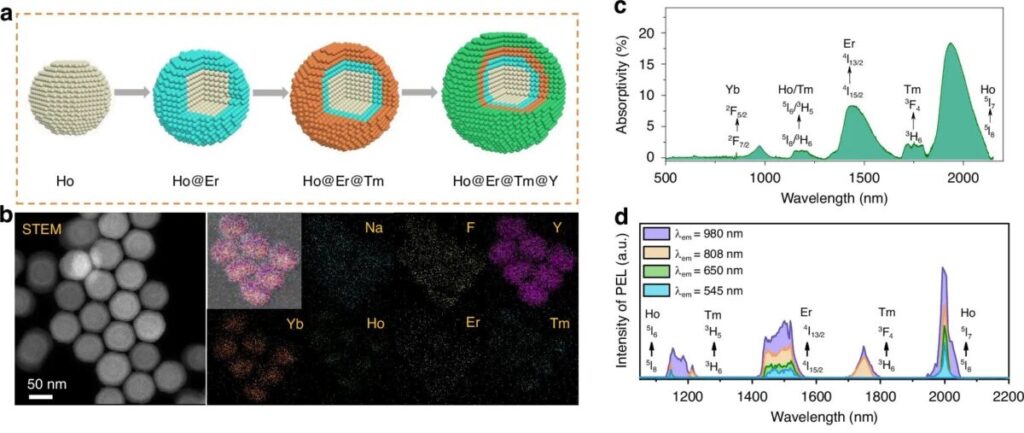An international research group has developed a light upconversion system that can reportedly improve the efficiency of crystalline silicon solar cells by as much as 0.87%. The technology consists of multilayer nanoparticles that act as near-infrared absorbers over different spectral ranges.
An international research team has developed a multiband near-infrared (NIR) upconversion (UC) system to improve light output in silicon solar cells (SSCs). The system is based on the idea of lanthanide-doped upconversion nanoparticles (UCNPs), which convert low-energy photons in the infrared range into higher energy photons in visible light.
“We have developed an efficient approach to harvest more of the NIR energy in sunlight through SSCs by integrating multiband NIR-responsive core-shell UCNPs,” the team explained, noting that it consists of multilayer nanoparticles containing lanthanide (Lb ) and ytterbium (Yb). , which can capture NIR energy in a wide range from 1,100 to 2,200 nm.
The system also contains holmium ion (Ho³⁺), erbium ion (Er³⁺) and thulium ion (Tm³⁺), all of which are Ln activator ions. Using a solvothermal method, they were all synthesized to create core-shell-shell-shell (CSSS) nanocrystals. Yb³ was introduced into all layers of the CSSS, and the team found that it “serves as a highly efficient electron pump, in synergistic action with the long-wavelength NIR excitation light, and simultaneously acts as a two-photon UC emitter.”
After creating this CSSS UCNP, the team vertically placed 150mm x 150mm commercial solar cells into it and then placed the entire device in an oven at 30 C for four hours. The resulting CSSS films were relatively flat, with low roughness of 6.19 nm. Different film thicknesses were produced, ranging from 130 nm to 550 nm.
“Compared to the uncoated SSCs with an absolute photon conversion efficiency of 18.5%, the efficiency of the SSCs coated with a 182 nm CSSS film was increased to 19.37% (a net increase of 0.87%) ,” said the academics. The efficiency increase for SSCs is dominated by the short-circuit currents. By further increasing the film thickness, the efficiency gradually decreases.”
Concluding their paper, the researchers added that the optimized multilayer Ln/Yb UCNPs exhibit a broad multiband NIR response distributed over the range from 1,100 to 2,200 nm, with an aggregate bandwidth of approximately 500 nm. “This design achieves a total UC photoluminescence quantum yield (PLQY) of 12% under standard solar irradiation,” they stated.
They also added that the CSSS-coated cell proved durable and retained functionality for more than 55,100 hours under standard temperature and humidity conditions. “These results make them very valuable for practical applications,” the scientists added.
Their findings were presented in “A multiband NIR upconversion core-shell design for improved light output of silicon solar cells”, published in Light: science and applications. Scientists from China’s Jilin University, Dalian Minzu University and Sweden’s KTH Royal Institute of Technology conducted the research.
This content is copyrighted and may not be reused. If you would like to collaborate with us and reuse some of our content, please contact: editors@pv-magazine.com.

